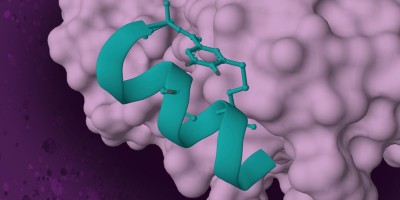A bioeconomy — that is, an economy in which fuels, chemicals and other products are sourced from biomass — can contribute to a sustainable and prosperous future. Realizing a bioeconomy will necessitate new methods for processing the complex structure of biomass to produce commodity chemicals. Many exciting opportunities are availing themselves to chemists brave enough to tackle this challenging problem.

References
Senate and House of Representatives of the United States of America in Congress. National Environmental Policy Act of 1969 Title I, Sec. 101a, https://energy.gov/nepa/downloads/national-environmental-policy-act-1969 (1969).
U.S. Department of Energy. Billion-Ton Report: Advancing Domestic Resources for a Thriving Economy Vol.1, https://energy.gov/sites/prod/files/2016/12/f34/2016_billion_ton_report_12.2.16_0.pdf (2016).
Rogers, J. N. et al. An assessment of the potential products and economic and environmental impacts resulting from a billion ton bioeconomy. Biofuels, Bioprod. Biorefin. 11, 110–128 (2017).
Dutta, A. et al. Process design and economics for the conversion of lignocellulosic biomass to hydrocarbon fuels: thermochemical research pathways with in situ and ex situ upgrading of fast pyrolysis vapors. National Renewable Energy Laboratoryhttps://www.nrel.gov/docs/fy15osti/62455.pdf (2015).
Dunn, J. Biochemical conversion. U.S. Department of Energyhttps://www.energy.gov/sites/prod/files/2017/05/f34/Bioprocessing%20Seperations%20Consortium_0.pdf (2017).
Ragauskas, A. J. et al. The path forward for biofuels and biomaterials. Science 311, 484–489 (2006).
Beckham, G. T., Johnson, C. W., Karp, E. M., Salvachua, D. & Vardon, D. R. Opportunities and challenges in biological lignin valorization. Curr. Opin. Biotechnol. 42, 40–53 (2016).
Davis, R. et al. Process design and economics for the conversion of lignocellulosic biomass to hydrocarbons: dilute-acid prehydrolysis and enzymatic hydrolysis deconstruction of biomass to sugars and biological conversion of sugars to hydrocarbons. National Renewable Energy Laboratoryhttps://www.nrel.gov/docs/fy14osti/60223.pdf (2013).
Acknowledgements
N.D.F acknowledges K. Craig and J. Male for helpful discussions.
Author information
Authors and Affiliations
Corresponding author
Ethics declarations
Competing interests
The author declares no competing interests.
PowerPoint slides
Rights and permissions
About this article
Cite this article
Fitzgerald, N. Chemistry challenges to enable a sustainable bioeconomy. Nat Rev Chem 1, 0080 (2017). https://doi.org/10.1038/s41570-017-0080
Published:
DOI: https://doi.org/10.1038/s41570-017-0080
- Springer Nature Limited
This article is cited by
-
Optimizing bioplastics translation
Nature Reviews Bioengineering (2024)
-
Conceptual evolution of the bioeconomy: a bibliometric analysis
Environment, Development and Sustainability (2022)
-
Bio-based polymers with performance-advantaged properties
Nature Reviews Materials (2021)
-
Rational engineering of the Trichoderma reesei RUT-C30 strain into an industrially relevant platform for cellulase production
Biotechnology for Biofuels (2020)


